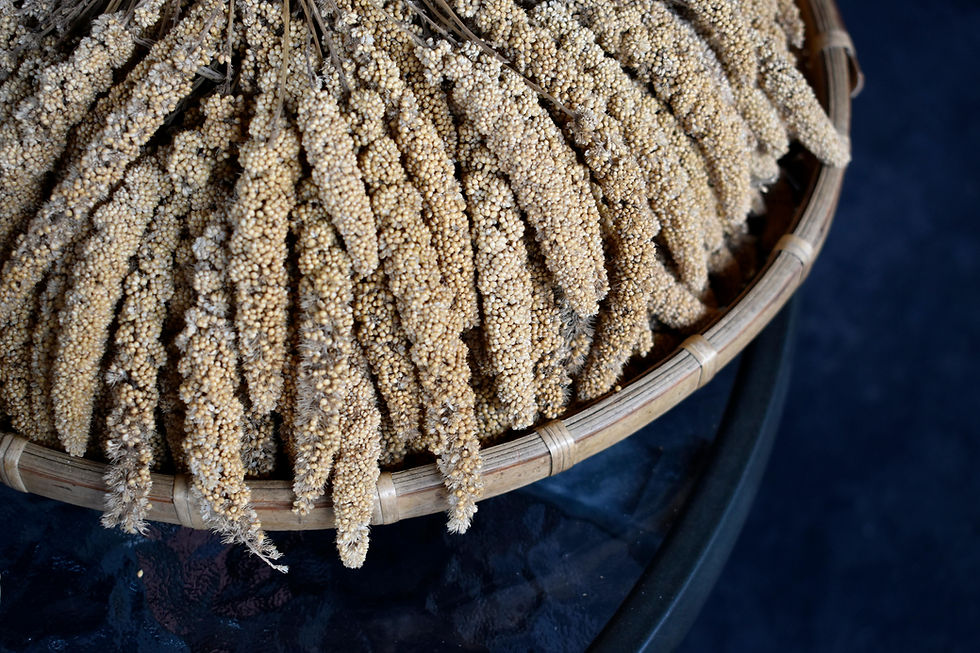Explore The Health Benefits Of Millet
- Jeetu Sharma

- Mar 10, 2024
- 2 min read
Updated: May 11, 2024
Small-seeded grains called millets have been grown for food for thousands of years all over the world, especially in Africa and Asia. People have been eating millet for a very long time. Now more people in other places want to eat them too.

Millets are good for you and can be used in lots of different meals. They help you stay healthy.
Here are some examples of millets
Finger Millet (Ragi): रागी (Ragi)
Foxtail Millet (Kakum/Kangni): काकूम (Kakum) / कंगनी (Kangni)
Buckwheat Millet (Kuttu): कुट्टू (Kuttu)
Pearl Millet (Bajra): बाजरा (Bajra)
Sorghum Millet (Jowar): ज्वार (Jowar)
Amaranth Millet (Rajgira/Ramdana/Chola): राजगिरा (Rajgira) / रामदाना (Ramdana) / चोला (Chola)
Little Millet (Moraiyo/Kutki/Shavan/Sama): मोरैयो (Moraiyo) / कुटकी (Kutki) / शावन (Shavan) / सामा (Sama)
Kodo Millet: कोदो (Kodo)
Barnyard Millet: सावा (Sawa)
Broomcorn Millet: झाड़ू बाजरा (Jhadu Bajra)
Benefits of Consuming Millets in your Daily Life.
Rich in Nutritions: Millets incorporate many vital nutrients for our fitness. They have carbohydrates, proteins, fiber, nutrients, and minerals. Millets are mainly composed of B vitamins like niacin, thiamine, and riboflavin. Fiber, protein, and complex carbs in millets help us feel full for longer. B nutrients resource strength levels and metabolism. Overall, millets offer awesome nutrients to guide universal well-being.
High in Protein: Millets are a super supply of plant-primarily based protein, making them a treasured addition to vegetarian and vegan diets. The protein content material varies depending on the form of millet but typically tiers from 8 % to 12 %.
High in Fiber: Millets are a great supply of dietary fiber, which aids digestion, promotes satiety, and facilitates keeping healthy blood sugar ranges. Consuming ingredients rich in fiber can also decrease the chance of diverse continual sicknesses.
Gluten-Free: Millets are naturally gluten-free, making them an incredible choice for people with celiac diseases or gluten sensitivity.
Low Glycemic Index (GI): Millets have a low glycemic index, which means that they cause a sluggish rise in blood sugar tiers compared to sophisticated grains. This belonging makes them suitable for human beings with diabetes or the ones seeking to control their blood sugar tiers.
Low in Fat: Millets are relatively low in fat compared to other grains, which makes them a healthy option for weight management when consumed as part of a balanced diet.
Millets are generally low in fat content, typically ranging from 1-7% per 100 gms. Remember, incorporating a variety of millets into your diet can provide a well-rounded source of essential nutrients.



Comments